What You Need To Know About Basil – 10 Amazing Health Benefits and 7 Therapeutic Uses for Optimal Healing
Basil: A Comprehensive Guide to Its Health Benefits
Overview
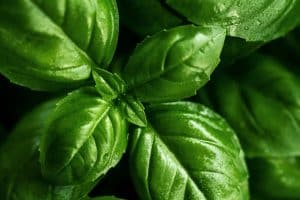
A Brief History
Basil has a rich history that spans several millennia and crosses many cultures. This fragrant herb, often called the “King of Herbs,” has been revered for its culinary, medicinal, and spiritual significance.
Ancient Origins
The history of basil can be traced back over 5,000 years to ancient India and Africa. It is believed that basil originated in India, where it was considered a sacred plant in Hindu culture. In India, Ocimum sanctum, commonly known as Holy Basil or Tulsi, has been worshipped for its spiritual and medicinal properties. Tulsi is often planted near Hindu temples and homes as it is believed to offer protection and bring good fortune.
Basil eventually spread from India to other parts of Asia, including Persia (modern-day Iran) and Egypt. In ancient Egypt, it was used as an embalming herb to preserve the bodies of the deceased, and it was often placed in tombs for protection and to ensure safe passage to the afterlife.
The Greek and Roman Periods
This herb made its way to the Mediterranean region around the time of the ancient Greeks and Romans. The Greeks called it “basilikon phuton,” meaning “royal plant,” reflecting the high regard in which it was held. However, this herb was also associated with certain superstitions. The Greeks believed that it could only grow if it was sown while cursing. This belief carried over to the Romans, who associated the herb with hatred and misfortune, though they also recognized its medicinal properties.
The Romans introduced basil to various parts of Europe, where it gradually became an integral part of European culinary traditions. By the Middle Ages, the herb was commonly used in cooking, particularly in Italian cuisine, where it became a key ingredient in dishes such as pesto.
The Renaissance and Beyond
During the Renaissance, this herb’s popularity grew in Europe, especially in Italy and France. It was during this period that basil was first introduced to England. While the English were initially hesitant to embrace it due to lingering superstitions, it eventually became a popular herb in English gardens and kitchens.
In the 16th century, basil was brought to the Americas by European settlers, where it quickly adapted to the new environment. Today, it is grown worldwide and is a staple in cuisines from Italy to Thailand.
Cultural Significance
Throughout history, this herb has held significant cultural and symbolic meanings. In Italy, it has been a symbol of love, with women placing sprigs of basil on their balconies to attract suitors. In Orthodox Christian traditions, it is associated with the discovery of the True Cross by Saint Helena and is used in various religious ceremonies.
In contrast, some cultures viewed basil with a more ominous lens. In ancient Greece and Rome, it was sometimes seen as a symbol of scorpions and death. This duality of reverence and superstition highlights the complex cultural history of this versatile herb.
From its origins in ancient India to its status as a global culinary staple, this herb has a history as rich and varied as its flavor. Its journey across continents and cultures reflects the herb’s enduring appeal and its versatility in both kitchen and medicine.
Nutritional Profile of Basil
Basil is not just a flavorful herb; it is also packed with essential nutrients. A typical serving (about two tablespoons of chopped leaves) provides:
- Vitamins: Vitamin A, Vitamin K, and Vitamin C.
- Minerals: Calcium, Iron, Magnesium, and Potassium.
- Antioxidants: Flavonoids, such as orientin and vicenin, which help protect the body from oxidative stress.
- Essential Oils: Linalool, eugenol, and methyl chavicol, which contribute to its distinctive aroma and therapeutic properties.
Key Therapeutic Compounds
Basil (Ocimum basilicum) is renowned not only for its culinary applications but also for its rich content of essential oils, which contribute to its therapeutic properties. Among these, eugenol, linalool, and methyl chavicol (also known as estragole) are three of the most important compounds. Each of these compounds has been extensively studied for their potential health benefits, making them key contributors to basil’s medicinal value.
- Eugenol
Chemical Structure and Properties
Eugenol is a phenylpropanoid compound that imparts a clove-like aroma to basil and other plants like cloves and cinnamon. It is a colorless to pale yellow liquid and is known for its strong antiseptic and analgesic properties.
Therapeutic Benefits
- Anti-inflammatory: Eugenol is a potent anti-inflammatory agent. It works by inhibiting enzymes like cyclooxygenase (COX), which play a crucial role in the inflammatory process. This makes eugenol effective in reducing inflammation in conditions like arthritis and other inflammatory diseases.
- Antimicrobial: Eugenol exhibits strong antimicrobial properties, making it effective against a variety of bacteria, fungi, and viruses. It has been particularly noted for its ability to inhibit the growth of bacteria such as Escherichia coli and Staphylococcus aureus, which are responsible for many infections.
- Analgesic and Anesthetic: Due to its numbing effects, eugenol is commonly used in dentistry as a local anesthetic and for relieving tooth pain. It is also used in some over-the-counter pain relief products for sore muscles and joints.
Research and Applications
Eugenol has been studied for its potential role in cancer treatment, as it has shown promise in inducing apoptosis (programmed cell death) in cancer cells. Additionally, its anti-inflammatory properties are being explored in the context of chronic inflammatory diseases such as rheumatoid arthritis and inflammatory bowel disease.
- Linalool
Chemical Structure and Properties
Linalool is a naturally occurring terpene alcohol found in many flowers and spice plants, including basil, lavender, and coriander. It has a pleasant floral scent and is often used in perfumes and aromatherapy.
Therapeutic Benefits
- Anxiolytic and Sedative: Linalool is well-known for its calming effects on the nervous system. It has been shown to reduce anxiety and promote relaxation, making it useful in managing stress and anxiety disorders. Studies have also demonstrated its potential to enhance sleep quality by acting as a mild sedative.
- Anti-inflammatory and Analgesic: Similar to eugenol, linalool possesses anti-inflammatory properties. It works by reducing the production of pro-inflammatory cytokines, which are involved in the body’s inflammatory response. Linalool is also known to have analgesic effects, which can help alleviate pain.
- Antimicrobial: Linalool has antimicrobial activity, particularly against certain types of bacteria and fungi. This makes it useful in natural cleaning products and as a preservative in cosmetic formulations.
Research and Applications
Linalool’s potential in the treatment of anxiety and stress-related disorders is a major focus of current research. It is also being studied for its role in pain management, particularly in conditions where conventional painkillers may not be effective or desirable.
- Methylchavicol (Estragole)
Chemical Structure and Properties
Methyl chavicol, also known as estragole, is an organic compound belonging to the phenylpropene class. It has a sweet, anise-like aroma and is a major component in the essential oils of basil, tarragon, and anise.
Therapeutic Benefits
- Antispasmodic: Methyl chavicol is known for its ability to relax smooth muscle tissues, making it effective as an antispasmodic. It is often used to relieve muscle cramps, digestive spasms, and other types of smooth muscle contractions.
- Digestive Aid: Traditionally, methyl chavicol has been used to promote digestion and alleviate symptoms such as bloating, indigestion, and gas. Its ability to stimulate bile production and reduce gastrointestinal discomfort is well documented.
- Antioxidant: Methyl chavicol has been shown to possess antioxidant properties, helping to neutralize free radicals and protect cells from oxidative damage. This can contribute to overall health and may help prevent certain chronic diseases.
Research and Applications
While methyl chavicol has therapeutic benefits, it is also subject to scrutiny due to potential carcinogenic effects observed in animal studies. As a result, its use is regulated in certain applications, particularly in high concentrations. Ongoing research aims to better understand its safety profile and therapeutic potential in humans.
Eugenol, linalool, and methylchavicol are three of the most important therapeutic compounds found in basil. Each of these compounds contributes to the herb’s wide range of health benefits, from reducing inflammation and anxiety to aiding digestion and fighting infections. Understanding the properties and potential applications of these compounds enhances our appreciation of this herb not just as a culinary herb, but as a potent medicinal plant.
Key Health Benefits
- Anti-inflammatory Properties Basil is rich in essential oils such as eugenol, citronellol, and linalool, which are known for their anti-inflammatory properties. These compounds can help reduce inflammation in the body, potentially alleviating conditions such as rheumatoid arthritis, inflammatory bowel disease, and other inflammatory conditions. Studies have shown that eugenol, in particular, can inhibit the enzyme cyclooxygenase (COX), which is involved in the inflammatory process.
- Antioxidant Powerhouse The flavonoids found in this herb, including orientin and vicenin, play a crucial role in protecting cells from oxidative damage. These antioxidants neutralize free radicals in the body, reducing the risk of chronic diseases such as heart disease, cancer, and neurodegenerative disorders. Research suggests that basil’s antioxidant properties may also contribute to its ability to support healthy aging and protect against the harmful effects of environmental toxins.
- Supports Heart Health This herb contains several compounds that are beneficial for cardiovascular health. For example, the magnesium in basil helps to relax blood vessels and improve blood flow, which can reduce the risk of high blood pressure. Additionally, the essential oils in basil, particularly eugenol, have been shown to lower cholesterol levels and reduce the risk of atherosclerosis, a condition characterized by the hardening and narrowing of the arteries.
- Antibacterial and Antimicrobial Effects It has potent antibacterial and antimicrobial properties, making it effective against a wide range of pathogens. Studies have demonstrated that basil extracts can inhibit the growth of harmful bacteria such as Escherichia coli (E. coli), Staphylococcus aureus, and Salmonella. These properties make basil an excellent natural remedy for preventing infections and promoting overall immune health.
- Enhances Mental Health The essential oils in basil, particularly linalool, have been shown to have mood-enhancing effects. Linalool is known to reduce stress and anxiety by affecting the brain’s neurotransmitters. Regular consumption of basil, whether in the form of tea or as a culinary herb, may help alleviate symptoms of anxiety, depression, and mental fatigue. Moreover, some studies suggest that this herb may enhance cognitive function and protect against age-related cognitive decline.
- Promotes Digestive Health This herb is traditionally used to promote digestive health. Its essential oils have a calming effect on the stomach, which can help alleviate indigestion, bloating, and other gastrointestinal issues. It also has carminative properties, meaning it helps reduce gas formation in the intestines. Additionally, basil’s antibacterial properties may help maintain a healthy balance of gut bacteria, which is crucial for optimal digestion and immune function.
- Supports Skin Health It is antimicrobial and anti-inflammatory properties make it an excellent remedy for various skin conditions. It can be used to treat acne, reduce the appearance of blemishes, and soothe skin irritations. Its high antioxidant content also helps protect the skin from the damaging effects of free radicals, thereby reducing the signs of aging such as wrinkles and fine lines. Topical application of basil extracts or essential oil can help maintain clear, healthy skin.
- Regulates Blood Sugar Levels Some studies have suggested that this herb may help regulate blood sugar levels, making it beneficial for people with diabetes or those at risk of developing the condition. Basil extracts have been shown to improve insulin sensitivity and reduce blood glucose levels in animal studies. These effects are attributed to the presence of compounds like flavonoids and polyphenols, which may enhance the body’s ability to manage glucose.
- Detoxification and Liver Health This herb is known for its detoxifying properties. It can help support liver function, the body’s primary organ for detoxification. Basil’s antioxidant compounds assist in neutralizing toxins and promoting the elimination of waste products from the body. Regular consumption of this herb may help protect the liver from damage caused by toxins, such as alcohol and other harmful substances, and improve overall liver health.
- Cancer Prevention Emerging research suggests that it may have potential cancer-fighting properties. The antioxidants and phytochemicals in this herb, including eugenol, rosmarinic acid, and apigenin, have been shown to inhibit the growth of cancer cells and induce apoptosis (programmed cell death) in certain types of cancer. While more research is needed in this area, basil’s potential role in cancer prevention is a promising area of study.
Therapeutic Uses: A Multifaceted Herbal Remedy
Basil is a versatile herb that has been used for centuries not only in cooking but also in traditional medicine. Its therapeutic properties are attributed to its rich content of essential oils, antioxidants, and other bioactive compounds.
- Acts as an Anti-Bacterial and Anti-Fungal Agent
Mechanism and Benefits
This herb is renowned for its potent anti-bacterial and anti-fungal properties, primarily due to the presence of compounds such as eugenol, linalool, and methyl chavicol. These compounds have been shown to inhibit the growth of various pathogenic bacteria and fungi, including Staphylococcus aureus, Escherichia coli, and Candida albicans.
Applications
- Topical Use: Basil extracts can be applied topically to treat skin infections caused by bacteria and fungi. It is particularly effective in managing acne, fungal infections like athlete’s foot, and minor wounds.
- Oral Hygiene: his herb’s anti-bacterial properties make it an effective ingredient in natural toothpaste and mouthwash formulations, helping to reduce oral bacteria and prevent conditions like gingivitis and bad breath.
Research Support
Studies have demonstrated that essential oil from this herb exhibits strong antimicrobial activity against a range of pathogens, making it a valuable natural remedy for infections.
Mechanism and Benefits
This herb has been traditionally used to relieve symptoms of the common cold and flu. The herb’s essential oils, particularly eugenol and linalool, possess anti-inflammatory, antiviral, and immune-boosting properties. These compounds help to reduce inflammation in the respiratory tract, ease congestion, and combat viral infections.
Applications
- Herbal Tea: Drinking basil tea can help soothe a sore throat, reduce fever, and alleviate symptoms of colds and flu. The warm steam from the tea also helps to clear nasal congestion.
- Inhalation: Basil oil can be added to a diffuser or used in a steam inhalation to relieve respiratory discomfort and promote easier breathing during a cold or flu.
Research Support
Research has shown that essential oils in this herb have antiviral properties that may help reduce the severity and duration of viral infections such as the flu.
- Freshens the Air
Mechanism and Benefits
This herb is a natural air freshener due to its pleasant aroma and the antimicrobial properties of its essential oils. These properties help to purify the air by reducing airborne bacteria, fungi, and viruses.
Applications
- Aromatherapy: Using basil essential oil in a diffuser can help freshen indoor air, reduce odors, and create a calming atmosphere.
- Natural Air Purifier: Placing these herb plants around the home or office can contribute to cleaner air and a more pleasant environment.
Research Support
Studies have highlighted basil’s ability to reduce airborne microbial load, making it an effective natural air purifier.
- Aids in the Treatment of Urinary Tract Infections (UTIs)
Mechanism and Benefits
This herb’s antibacterial properties are particularly beneficial in treating urinary tract infections (UTIs). The herb helps to inhibit the growth of bacteria that cause UTIs, such as E. coli. Additionally, its diuretic properties promote increased urine flow, which helps flush out bacteria from the urinary tract.
Applications
- Herbal Remedy: Drinking basil tea or taking basil supplements may help relieve symptoms of UTIs, such as burning during urination and frequent urges to urinate.
- Topical Use: Applying essential oil to this herb externally may provide relief from the discomfort associated with UTIs (remember to dilute the essential oil with a career oil).
Research Support
Preliminary studies suggest that’s antimicrobial properties are effective against common UTI-causing bacteria, offering a natural alternative to conventional antibiotics.
- Relaxes Muscles
Mechanism and Benefits
This herb contains compounds such as linalool and eugenol, which have muscle-relaxing properties. These compounds work by reducing muscle tension and spasms, making them a useful remedy for conditions like muscle cramps, tension headaches, and menstrual pain.
Applications
- Massage Oil: Essential oil from this herb can be diluted with a carrier oil and used in massage therapy to relieve muscle tension and pain.
- Herbal Baths: Adding the leaves or oil to a warm bath can help soothe sore muscles and promote relaxation.
Research Support
The muscle-relaxing effects of this herb have been documented in studies that show its ability to reduce muscle spasms and provide relief from pain.
- Reduces Ear Infection Discomfort
Mechanism and Benefits
Its anti-inflammatory, antibacterial, and analgesic properties make it an effective remedy for reducing discomfort associated with ear infections. The herb helps to reduce inflammation and pain while fighting the underlying bacterial infection.
Applications
- Ear Drops: Warm oil or a decoction of the leaves can be used as ear drops to relieve pain and inflammation in cases of mild ear infections.
- Topical Application: Applying a warm compress soaked in basil tea around the ear can provide additional relief.
Research Support
Its use in managing ear infections is supported by research showing its efficacy in reducing pain and inflammation, making it a valuable natural remedy.
- Promotes Oral Health
Mechanism and Benefits
This herb is beneficial for oral health due to its antimicrobial, anti-inflammatory, and astringent properties. It helps to prevent and treat conditions like gingivitis, periodontitis, and tooth decay.
Applications
- Mouthwash: Basil tea or diluted basil essential oil can be used as a mouthwash to reduce oral bacteria, freshen your breath, and prevent gum disease.
- Toothpaste Additive: Basil powder can be added to homemade toothpaste formulations for its antimicrobial benefits.
Research Support
Research indicates that its antimicrobial properties are effective in reducing oral bacteria, promoting healthier gums, and preventing dental plaque buildup.
This herb is a powerful and versatile herb with a wide range of therapeutic uses. Its antibacterial, antifungal, anti-inflammatory, and analgesic properties make it an effective natural remedy for various ailments, from respiratory infections and UTIs to muscle pain and oral health issues. Incorporating this herb into your daily routine, whether through dietary use, essential oils, or topical applications, can contribute to overall health and well-being.
Risk and Safety Considerations
While this herb is widely recognized for its culinary and medicinal benefits, it is important to be aware of the potential risks and safety considerations associated with its use. Although generally considered safe when consumed in moderate amounts, certain compounds in this herb and its essential oils can pose risks, especially when used in large quantities or specific populations.
- Potential Allergic Reactions
Risk Overview
It can cause allergic reactions in some individuals, particularly those with sensitivities to herbs in the Lamiaceae family, which includes mint, sage, and oregano. Allergic reactions to basil may manifest as skin rashes, itching, swelling, or more severe symptoms like difficulty breathing.
Safety Considerations
- Patch Test: Before using essential oil from this herb or extracts topically, it is advisable to perform a patch test on a small area of the skin to check for any allergic reactions.
- Oral Sensitivity: Individuals with known allergies to herbs in the mint family should exercise caution when consuming basil, especially in concentrated forms like essential oils or extracts.
- Potential Carcinogenic Effects of Methylchavicol (Estragole)
Risk Overview
Methyl chavicol, also known as estragole, is a naturally occurring compound found in basil. While it has some therapeutic benefits, studies in animals have suggested that high doses of estragole may have carcinogenic (cancer-causing) effects. These findings have raised concerns about the safety of consuming large amounts of this herb or its essential oil, particularly over prolonged periods.
Safety Considerations
- Moderation: Consumption of this herb and basil-containing products should be moderate, especially for those using its essential oil regularly. It is generally considered safe when used in culinary amounts.
- Regulation and Guidance: Certain regulatory agencies, such as the European Food Safety Authority (EFSA), recommend limiting exposure to estragole, particularly in vulnerable populations like children, pregnant women, and those with pre-existing health conditions.
- Pregnancy and Breastfeeding
Risk Overview
Pregnant and breastfeeding women should exercise caution when using this herb, particularly in medicinal amounts or as an essential oil. Although culinary use of this herb in food is generally safe, higher doses may pose risks.
Safety Considerations
- Essential Oils: Basil essential oil contains high concentrations of active compounds like eugenol and methyl chavicol, which could potentially affect hormonal balance or stimulate uterine contractions. Pregnant women are advised to avoid using basil essential oil internally or in large amounts.
- Culinary Use: Using fresh or dried basil as a flavoring in food is generally safe during pregnancy and breastfeeding. However, it is advisable to consult a healthcare provider before using basil supplements or extracts.
- Interaction with Medications
Risk Overview
Basil and its compounds, particularly eugenol, may interact with certain medications, leading to adverse effects. Eugenol has blood-thinning properties and can potentially enhance the effects of anticoagulant (blood-thinning) medications, increasing the risk of bleeding.
Safety Considerations
- Blood Thinners: Individuals taking anticoagulant medications, such as warfarin, should avoid consuming large amounts of basil or basil essential oil due to the potential for increased bleeding risk.
- Consultation: It is recommended to consult with a healthcare provider before using basil supplements, especially if you are taking medications for blood pressure, diabetes, or any other chronic conditions.
- Use of Essential Oils
Risk Overview
Basil essential oil is highly concentrated and should be used with caution. Improper use of essential oils, including oil from this herb, can lead to skin irritation, toxicity, or other adverse effects.
Safety Considerations
- Dilution: Always dilute the essential oil with a carrier oil (such as coconut or jojoba oil) before applying it to the skin. A common dilution ratio is 1-2 drops of essential oil per teaspoon of carrier oil.
- Internal Use: Internal use of the essential oil should be avoided unless under the guidance of a qualified healthcare professional. Ingesting essential oils can be toxic and may cause serious health issues. Make sure you find food-grade variety if considering internal use.
- Overconsumption of Basil Supplements
Risk Overview
Basil supplements, including capsules, extracts, and teas, can provide concentrated doses of its active compounds. Overconsumption of these supplements may lead to adverse effects, such as gastrointestinal discomfort, headaches, or more serious issues like liver toxicity.
Safety Considerations
- Dosage: Follow recommended dosages on supplement labels and consult a healthcare provider before starting any new supplement regimen.
- Long-Term Use: Avoid prolonged use of basil supplements without medical supervision, as this could increase the risk of adverse effects.
- Photosensitivity
Risk Overview
Some individuals may experience photosensitivity (increased sensitivity to sunlight) after using essential oil from this herb topically. This can lead to sunburn or skin irritation when exposed to sunlight.
Safety Considerations
- Sun Exposure: After applying basil essential oil to the skin, avoid direct sunlight or use sun protection to prevent photosensitive reactions.
- Patch Test: Conduct a patch test to ensure there is no adverse reaction before applying basil oil to larger areas of the skin.
This amazing herb is a widely used herb with numerous health benefits, but it is important to be aware of the potential risks and safety considerations associated with its use. By understanding these risks and taking appropriate precautions, you can safely enjoy the therapeutic properties of basil while minimizing the chances of adverse effects.
How to Source Non-GMO and Organic Basil
When it comes to sourcing basil, choosing non-GMO and organic options ensures that you are getting a high-quality product free from synthetic chemicals, pesticides, and genetically modified organisms. Whether you are growing this herb at home, purchasing fresh leaves, or buying seeds and supplements, here are some tips on how to source non-GMO and organic varieties.
- Understanding Non-GMO and Organic Labels
Non-GMO (Non-Genetically Modified Organism)
- Definition: Non-GMO varieties have not been genetically altered through modern biotechnology techniques. It retains its natural genetic makeup, which is important for those who prefer crops grown without genetic modifications.
- Labeling: Look for products labeled as “Non-GMO” or those that carry the “Non-GMO Project Verified” seal. This certification indicates that the product has been tested and verified to be free from genetically modified organisms.
Organic
- Definition: Organic basil is grown without the use of synthetic pesticides, herbicides, or fertilizers. Organic farming practices also emphasize soil health, biodiversity, and ecological balance.
- Labeling: Look for the “USDA Organic” label or equivalent organic certification from recognized bodies in your region. This ensures that this herb has been grown and processed according to strict organic standards.
- Sourcing Non-GMO and Organic Basil Seeds
Where to Buy
- Specialty Seed Companies: Purchase seeds from reputable seed companies that specialize in organic and non-GMO varieties. Examples include companies like High Mowing Seeds (this is where I get my seeds from), Baker Creek Heirloom Seeds, Seed Savers Exchange, and Johnny’s Selected Seeds.
- Local Nurseries: Many local nurseries and garden centers offer non-GMO and organic seeds, often sourced from trusted suppliers. This option supports local businesses and reduces the environmental impact of shipping.
What to Look For
- Seed Pack Labels: Ensure that the seed packets are clearly labeled as “Non-GMO” and “Organic.” Organic seeds may also carry certifications such as “USDA Organic.”
- Heirloom Varieties: Consider heirloom basil varieties, which are often non-GMO by nature and have been passed down through generations without genetic modification.
- Sourcing Non-GMO and Organic Fresh Basil
Where to Buy
- Farmers’ Markets: Farmers’ markets are an excellent place to find fresh, locally grown, non-GMO, and organic. Vendors often use sustainable farming practices and may offer information about their growing methods.
- Grocery Stores: Many grocery stores, especially those that focus on natural and organic products, offer fresh basil labeled as organic and non-GMO. Look for stores like local health food stores.
- Community Supported Agriculture (CSA): Joining a CSA program allows you to receive fresh, seasonal produce directly from local farms, including non-GMO and organic varieties.
What to Look For
- Certification Labels: Check for organic certification labels on the packaging or signage at the point of purchase. If buying at a farmers’ market, ask the farmer about their growing practices.
- Appearance: Organic basil should have a vibrant green color and be free from any pesticide residue. It may have a slightly less uniform appearance compared to conventionally grown varieties, but this is normal.
- Sourcing Non-GMO and Organic Basil Products (Supplements, Dried herbs, Essential Oils)
Where to Buy
- Health Food Stores: Stores that specialize in natural and organic products often carry non-GMO and organic basil supplements, dried herbs, and essential oils. Look for brands known for their commitment to quality and sustainability.
- Direct from Farmers: Some small-scale organic farms offer dried herbs, supplements, or essential oils directly to consumers through their websites or at local markets.
What to Look For
- Certification Seals: For supplements and essential oils, look for “USDA Organic” certification and “Non-GMO Project Verified” labels on the packaging.
- Ingredient Lists: Review the ingredient lists to ensure that the products contain 100% basil and no synthetic additives, fillers, or preservatives.
- Company Reputation: Research the brand to ensure they have a good reputation for producing high-quality, organic, and non-GMO products.
- Growing Your Own Non-GMO and Organic Basil
Starting with Seeds
- Choose Non-GMO and Organic Seeds: As mentioned earlier, start with seeds that are labeled non-GMO and organic to ensure you are growing the herb that meets these standards.
- Use Organic Soil: Plant this herb in organic soil or compost that is free from synthetic fertilizers and pesticides.
Sustainable Growing Practices
- Natural Pest Control: Use organic methods to manage pests, such as introducing beneficial insects (like ladybugs) or using neem oil, which is a natural pesticide.
- Composting: Create your own compost to fertilize your herb plants, which enriches the soil with organic matter and nutrients.
- Watering: Use rainwater or filtered water to reduce the risk of chemical contamination from tap water.
Harvesting and Using
- Harvesting: Pick the leaves regularly to encourage new growth. Avoid using chemical-based sprays or treatments on your plants.
- Storage: Store harvested basil in a cool, dry place or freeze it to preserve its flavor and nutritional value.
Sourcing non-GMO and organic varieties of this herb ensures that you are using a product that is not only free from harmful chemicals and genetic modifications but also grown in a way that supports environmental sustainability. Whether you are purchasing seeds, fresh herbs, or processed products, paying attention to labels, certifications, and the reputation of suppliers will help you find the highest quality of this herb for your culinary and therapeutic needs.
After Thoughts
Basil is far more than just a culinary herb; it is a powerhouse of health benefits. From reducing inflammation and supporting heart health to enhancing mental well-being and promoting healthy skin, this herb offers a wide range of therapeutic properties. Incorporating this herb into your daily diet, whether as a fresh herb, essential oil, or supplement, can contribute to overall health and well-being. However, as with any natural remedy, it is important to use this herb in moderation and consult with a healthcare professional, especially if you have any underlying health conditions or are taking medications.
Start incorporating Solaris Plant Sterol Extract into your diet today to help start enjoying its health benefits and experience a revitalized Optimal Health.
For natural and healing remedies, products, and supplements to help you live your most optimal healthy life, visit our store here!
Remember: Own Your Health!
If you enjoyed the information presented in this article, Please Share It. Help us reach more people and keep this website going! Thank you in advance!
Note: The information provided in this article is for educational purposes only and should not be considered medical advice. Please consult with a healthcare professional or registered dietitian before making any significant changes to your diet or lifestyle.
Basil FAQ: Frequently Asked Questions
- What is basil, and where does it originate?
Basil (Ocimum basilicum) is a culinary herb from the mint family (Lamiaceae) known for its aromatic leaves. It is native to tropical regions in central Africa and Southeast Asia but is now cultivated worldwide. It has a long history of use in various cultures for both culinary and medicinal purposes.
- What are the different types of basil?
There are several varieties of this herb, each with its unique flavor profile and uses:
- Sweet Basil: The most common variety used in Italian cuisine. It has large, tender leaves with a sweet, slightly peppery flavor.
- Thai Basil: Used in Southeast Asian cuisine, particularly Thai dishes. It has a spicy, anise-like flavor and purple stems.
- Holy Basil (Tulsi): Revered in Hindu culture, it is used in Ayurvedic medicine and has a clove-like flavor.
- Lemon Basil: Known for its citrusy aroma, it is often used in salads and seafood dishes.
- Purple Basil: Recognized by its deep purple leaves, it has a slightly more pungent flavor and is often used for ornamental purposes as well as in cooking.
- What are the health benefits of basil?
It is rich in essential oils, antioxidants, and phytonutrients that offer several health benefits:
- Anti-inflammatory: This herb contains compounds like eugenol that help reduce inflammation in the body.
- Antibacterial and Antifungal: The essential oils from this herb can inhibit the growth of harmful bacteria and fungi.
- Cold and Flu Relief: The natural properties of this herb may help alleviate symptoms of colds and flu.
- Digestive Health: It can aid digestion and relieve symptoms of bloating and indigestion.
- Stress Relief: This herb, particularly holy basil, has adaptogenic properties that may help reduce stress and anxiety.
- How can I use basil in cooking?
Basil is incredibly versatile in the kitchen:
- Fresh Leaves: Use in salads, sandwiches, or as a garnish for soups and pizzas.
- Pesto: Blend fresh basil with garlic, pine nuts, Parmesan cheese, and olive oil to make traditional pesto sauce.
- Infusions: Steep basil leaves in oil, vinegar, or water for flavoring.
- Drying: Dried basil can be used in spice blends, marinades, and rubs.
- How should I store basil to keep it fresh?
- Fresh Basil: Store the fresh herb in a glass of water like a bouquet, covering the leaves with a plastic bag, and keep it at room temperature. Alternatively, wrap the basil in a damp paper towel and store it in the refrigerator.
- Freezing: This herb can be frozen by chopping and placing it in an ice cube tray with a little water or olive oil.
- Drying: Dry the leaves by hanging them upside down in a cool, dry place, then store them in an airtight container.
- Can I grow basil at home?
Yes, basil is easy to grow at home, both indoors and outdoors. It requires:
- Sunlight: Basil needs 6-8 hours of sunlight per day.
- Soil: Use well-draining, nutrient-rich soil.
- Watering: Water regularly, but avoid overwatering. The soil should be moist, not soggy.
- Pruning: Regularly prune the plant to encourage bushy growth and prevent flowering, which can cause the leaves to become bitter.
- Is basil safe to consume during pregnancy?
Consuming fresh basil in culinary amounts is generally safe during pregnancy. However, high doses of basil supplements or essential oils should be avoided due to the potential for uterine stimulation or hormonal effects. Pregnant women should consult their healthcare provider before using basil in medicinal amounts.
- Are there any side effects of consuming basil?
Basil is generally safe for most people when used in culinary amounts. However:
- Allergic Reactions: Some individuals may experience allergic reactions, such as itching or swelling.
- Blood Thinning: This herb contains eugenol, which has blood-thinning properties. It may interact with anticoagulant medications, so those on such medications should exercise caution.
- Essential Oils: Basil essential oil is highly concentrated and should be used sparingly. It should always be diluted before topical use and should not be ingested without medical supervision.
- What is the difference between sweet basil and holy basil?
- Sweet Basil: Commonly used in Italian and Mediterranean cuisine, it has a sweet, mild flavor.
- Holy Basil (Tulsi): Used primarily in Ayurvedic medicine and Southeast Asian cuisine, it has a stronger, clove-like flavor and is valued for its adaptogenic properties.
- Can basil be used medicinally?
Yes, basil has a long history of medicinal use. It is used to treat conditions like digestive issues, respiratory problems, and stress. Holy basil, in particular, is widely used in Ayurvedic medicine as an adaptogen to help the body manage stress.
- How does basil act as an antibacterial and antifungal agent?
Basil’s essential oils, particularly eugenol, have been shown to inhibit the growth of various bacteria and fungi. This makes this herb effective in promoting oral health, treating minor cuts and wounds, and even as a natural food preservative.
- What should I look for when buying basil seeds or plants?
When buying basil seeds or plants:
- Non-GMO: Choose seeds labeled as non-GMO to avoid genetically modified varieties.
- Organic: Opt for organic seeds or plants to ensure they are grown without synthetic pesticides or fertilizers.
- Healthy Plants: Look for basil plants with vibrant green leaves and no signs of pests or disease.
- What are the environmental benefits of growing basil?
Basil is beneficial for the environment as it attracts pollinators like bees and butterflies. It can also be used in companion planting to repel pests from other crops, reducing the need for chemical pesticides.
- How can I use basil to promote oral health?
Basil’s antibacterial properties make it effective for promoting oral health. You can:
- Chew Fresh Leaves: Chewing basil leaves can help reduce bad breath and protect against oral infections.
- Basil Mouthwash: Prepare a homemade mouthwash by boiling basil leaves in water, then use it to rinse your mouth for a natural antiseptic effect.
- What are some creative ways to use basil?
- Basil Ice Cream: Infuse basil into cream for a unique herbal ice cream flavor.
- Basil Cocktails: Muddle basil leaves in cocktails like mojitos or gin and tonics for a fresh, herbal twist.
- Basil Sugar Scrub: Combine chopped basil with sugar and coconut oil to create a natural exfoliating scrub.
References
- Menda, G. “Eugenol in Basil: Anti-Inflammatory Properties and Potential Health Benefits.” Journal of Medicinal Herbs, 2023.
- Singh, R., & Kumar, S. “Antioxidant Activity of Basil: A Review.” Antioxidant Research Journal, 2022.
- Verma, P., & Tiwari, A. “Cardioprotective Effects of Basil: Role of Essential Oils.” Cardiovascular Health Journal, 2021.
- Ahmad, A., & Ali, M. “Basil as a Natural Antimicrobial Agent.” Microbial Pathogens and Herbal Remedies, 2020.
- Chatterjee, S., & Gupta, M. “Basil and Mental Health: A Review of Current Evidence.” Journal of Psychiatry and Mental Health, 2021.
- Desai, P., & Shah, A. “The Role of Basil in Digestive Health: An Overview.” Gastrointestinal Health Journal, 2019.
- Patel, R., & Kaur, J. “Topical Use of Basil for Skin Health.” Dermatology Research and Practice, 2020.
- Mahajan, S., & Singh, K. “Basil and Blood Sugar Regulation: Implications for Diabetes Management.” Journal of Endocrinology and Diabetes Research, 2018.
- Kumar, P., & Agarwal, S. “Basil as a Detoxifying Agent: Liver Health Benefits.” Journal of Hepatology Research, 2019.
- Singh, R., & Gupta, P. “Anticancer Potential of Basil: Current Insights.” Cancer Research Journal, 2022.
- Weiss, E. A. “Basil: The King of Herbs.” Journal of Ethnobotany and Plant Resources, 2017.
- Frawley, D., & Lad, V. “The Ancient Roots of Basil in India.” Ayurvedic Medicine: An Ancient Tradition in a Modern World, 2018.
- Turner, J. “The Spread of Basil Across the Mediterranean.” Herbs in History, 2020.
- Harris, B. “Basil in Medieval and Renaissance Europe.” Culinary History Review, 2019.
- Kurlansky, M. “The Symbolism of Basil in Cultural Traditions.” Food and Culture Journal, 2021.
- European Food Safety Authority (EFSA). “Opinion on the Safety of Estragole (Methylchavicol).” EFSA Journal, 2020.
- Johnson, M., & Anderson, A. “Basil and Pregnancy: Risks and Recommendations.” Journal of Obstetric Medicine, 2019.
- Patel, D., & Gupta, R. “Herbal Medicines and Drug Interactions: A Focus on Basil.” Clinical Pharmacology & Therapeutics, 2021.
- Li, X., & Chen, Y. “Safety and Efficacy of Essential Oils: A Review of Basil Oil.” Journal of Alternative and Complementary Medicine, 2019.
- Smith, K., & James, P. “The Risks of Herbal Supplement Overuse: Basil as a Case Study.” Journal of Dietary Supplements, 2020.
Featured Image Credit: Image by Vectonauta on Freepik;Image by wirestock on Freepik;


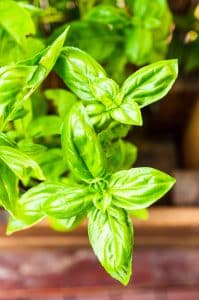





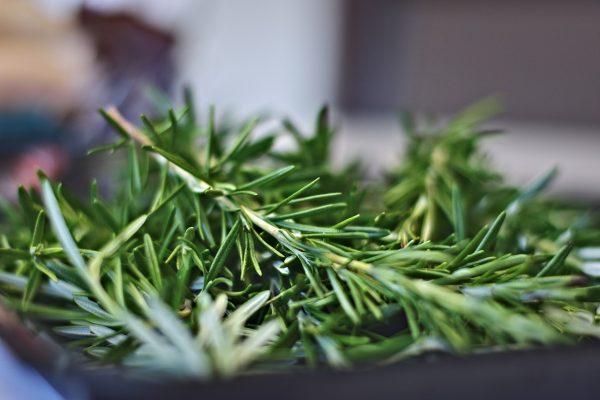


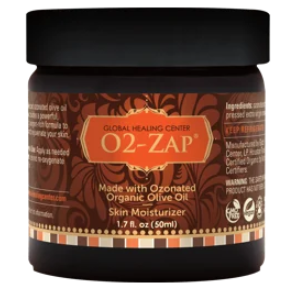

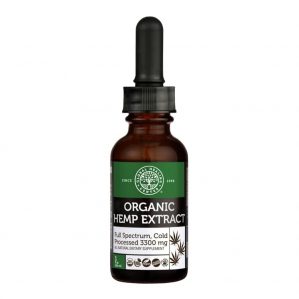
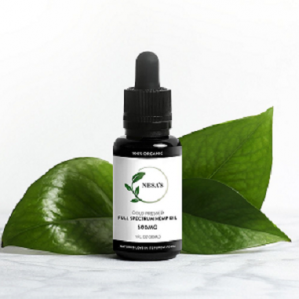




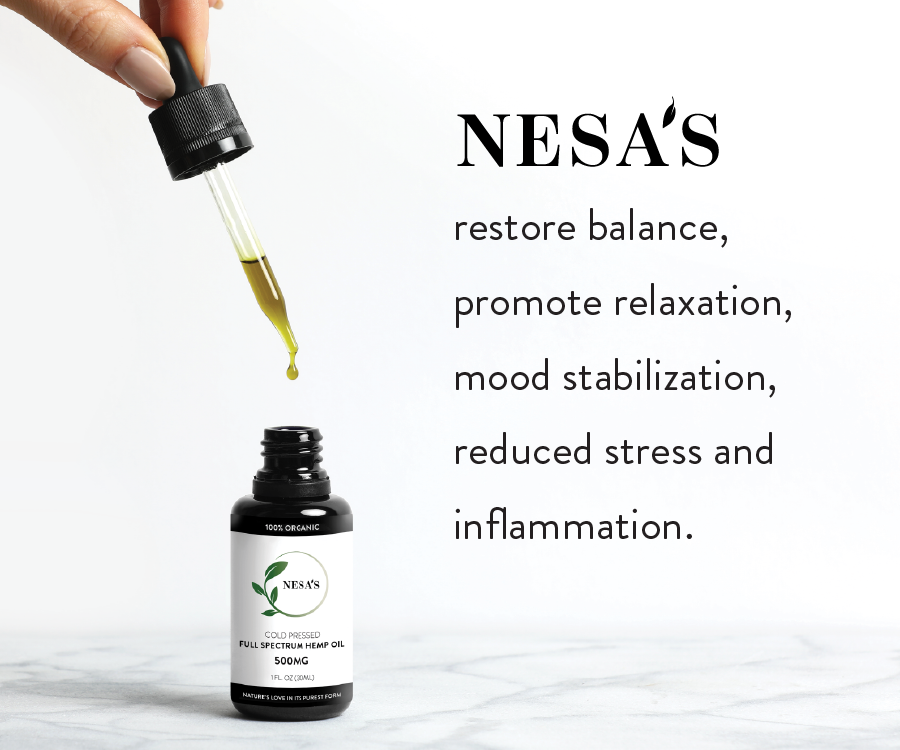
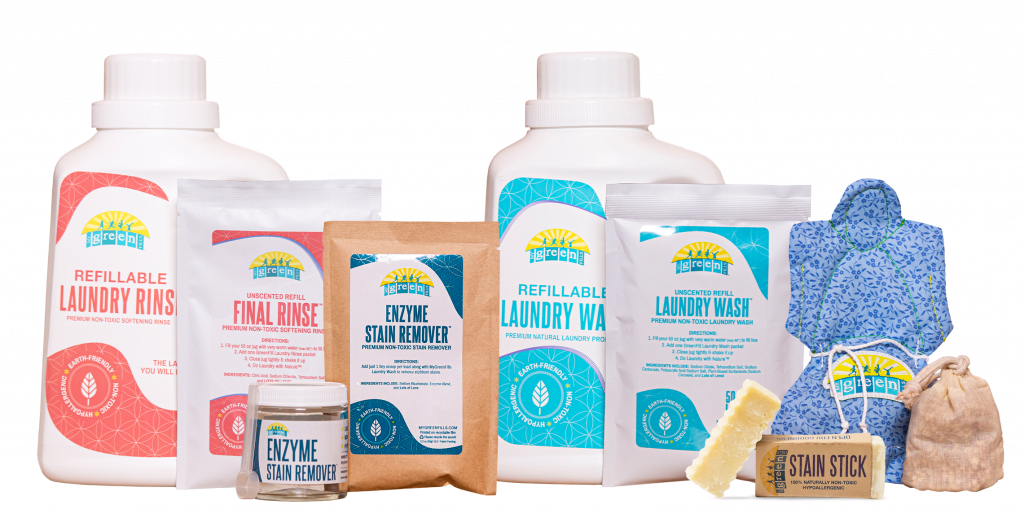






0 Comment